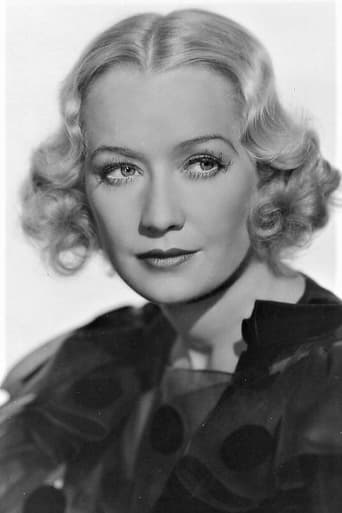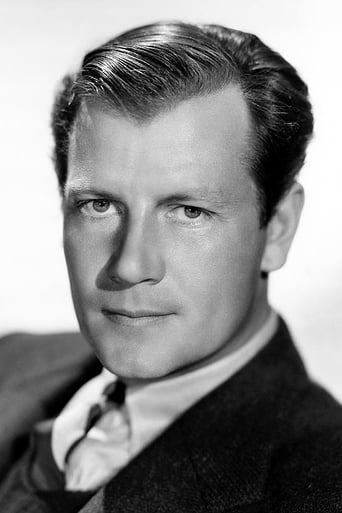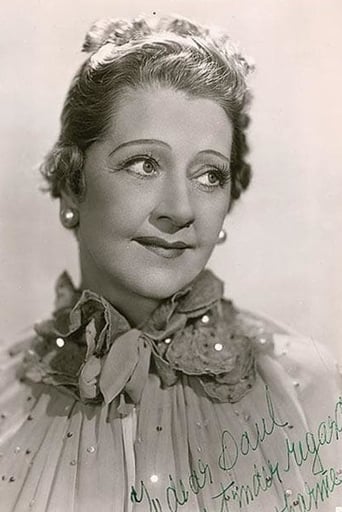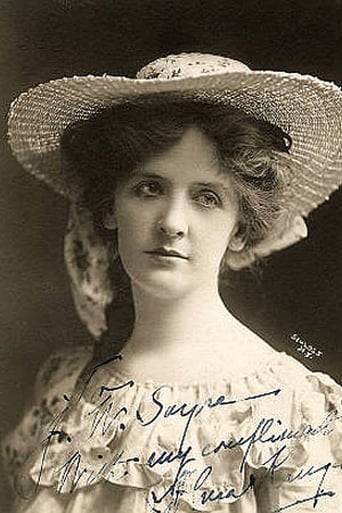bkoganbing
I'm sure that Lillian Hellman when she sold the screen rights for The Children's Hour she had to know that her play about lesbianism would be totally changed by Hollywood. The Code was firmly in place now and even a subject that might be just hinted at would be forbidden now. For the three decades homosexuality could at most be discreetly hinted at.Bearing that in mind These Three now changed to be just a heterosexual triangle with Merle Oberon, Joel McCrea, and Miriam Hopkins was a decent drama about the ill effects of gossip. And the gossiper received an Oscar nomination.Oberon and Hopkins are teachers at a girl's school and Oberon is keeping company with Doctor Joel McCrea. But one night quite innocently McCrea is seen with Hopkins where they live by one of the girls. Bonita Granville had been chastised earlier on so now the evil little teen starts some gossip and as a result These Three have to defend themselves against something non-existent. That's usually the worst thing you ever have to defend yourself against, something totally made up.William Wyler directed this one with sensitivity and taste. And he lived long enough to direct the real version of The Children's Hour in the Sixties. Miriam Hopkins appears in both in different roles.Bonita Granville got an Oscar nomination for Best Supporting Actress in the first year Supporting players were categories. But she lost to Gale Sondergaard playing a wicked adult in Anthony Adverse.It's a good film but not as good as The Children's Hour. How could it be?
lugonian
THESE THREE (Samuel Goldwyn/United Artists, 1936), directed by William Wyler, based on "The Children's Hour" (1934) by Lillian Hellman, who also scripted the original story and screenplay, is a powerful drama expertly transferred to the screen with a timely message on how a spiteful teenager's lies can virtually destroy the lives and reputations of innocent people. Being more like something commonly depicted in 1950s cinema such as THE BAD SEED (1956) for example, THESE THREE can be categorized as ahead of its time.The story revolves around best friends Martha Dobie (Miriam Hopkins) and Karen Wright (Merle Oberon), first presented as classmates graduating from college. While Karen has no living relatives, Martha has her meddlesome aunt, Lily Mortar (Catherine Doucet), a former actress who theatrical manner gets on her nerves. Following their ceremony, the girls decide to work together as teachers by forming their very own school. Taking an old abandoned farm house in Lancet, Massachusetts, Karen has inherited by her late grandmother, they, with the help of Joseph Cardin (Joel McCrea), their neighboring doctor, beekeeper and handyman, help turn a run down building into an established Wright and Dolbie School. The teachers successfully acquire the much needed students to get themselves established. All goes well until Mary Tilford (Bonita Granville), a mischievous child of a rich aunt (Alma Kruger) creates trouble for those around her. Aside from stealing a bracelet belonging to Helen Burton (Mary Louise Cooper) and placing the blame on the innocent Rosalie Welles (Marcia Mae Jones), she fakes heart attacks so not to be punished for her actions, though both Karen and Martha through her as a compulsive lier who needs help and strict discipline. Hearing rumors involving "these three" are enough for Mary to avenge herself on them by stretching the truth out of proportion to her aunt, forcing Rosalie to back up her statements. With Martha and Karen finding their pupils being taken out of school, and the doctor losing his position in the hospital, "these three" join forces in a courtroom battle, to only find their lives and reputations ruined beyond repair.While the screen adaptation substitutes a romantic triangle over its original premise of Martha and Karen as suspected lesbians from the stage play, the film retains its powerful impact thanks to William Wyler's direction. When Wyler directed its remake, THE CHILDREN'S HOUR (1961) starring Audrey Hepburn, Shirley MacLaine and James Garner (along with Miriam Hopkins in the Doucet role), the story was not only brought up to date, but the lesbian theme retained. Comparing both versions, the original is no doubt the best of these two. Although the remake is well acted by the leading players, THE CHILDREN'S HOUR comes off as dreary, depressing and weakened by the lackluster performances by the children, especially Karen Balkin whose tantrums and outbursts can't parallel towards Granville's Academy Award nominated (supporting category) performance as the spiteful Mary Tilford. Before Granville played the lovable teenage sleuth Nancy Drew in four installments for Warner Brothers (1938-39), and other notable roles through her adulthood, she did a similar Mary Tilford portrayal in MAID OF SALEM (Paramount, 1937) as a vengeful girl whose spiteful lies lead to a Salem witch hunt. She proves herself a fine, intense young actress, especially when her motionless eyes show no remorse for her actions.Considering Hopkins and Oberon as possible contenders as Academy Award nominees, Hopkins is most notable as the stronger of the two due to her forceful performance. Aside from keeping her emotions to herself over the man she loves, her heated arguments with her aunt, after refusing to testify for her in court, are realistically done. It seems interesting how the script constantly substitutes "Be still" for either "Be quiet" or "Shut up!" While Hopkins, Oberon and McCrea are the only actors with their names presented in the opening credits, the supporting players, consisting of Walter Brennan who provides the film's lighter moments as a taxi driver who charges a dollar a mile; and Margaret Hamilton as Agatha, the Tilford Maid, in a brief but striking performance with the unruly child, are given the credit they deserve along with other members of the cast. The closing credits does not exist in the old 1986 VHS recording, though available in TV prints. Aside from presentations on commercial TV prior to 1990s, THESE THREE did have exposure on cable television throughout the years, ranging from Turner Network Television (1991-92); American Movie Classics (1992-1993); and Turner Classic Movies (2003-2005).In closing, THESE THREE is another great movie from the Samuel Goldwyn archives. Nothing in this 93 minute presentation drags and no scenes unnecessary. (****)
dbdumonteil
I have a tendency ,unlike the other users,to like the remake best (made by Wyler too) .Probably because Lilian Hellman's play included hints at lesbianism,a subject which could not be treated in the thirties ,when Wyler was one of the specialists of the female melodrama.That's why I think that the 1963 movie was more exciting ,and still is ,still in 2007.I'm not sure that all the parents would accept a gay teacher ,but a ménage à trois has lost its scandalous side.However "these three" is another Wyler's must,well acted by Merle Oberon ,Joel McCrea and Miriam Hopkins ,the latter being my favorite .Wyler is a master when it comes to tell a story.His depiction of the tiny school,of the manor are lovely.Maybe the horrid child overplays a bit -she is more convincing in the remake- but her young pal ,being blackmailed and afraid of being sent to a reform school ,is a good young actress.The scene when the two women meet McCrea for the first time is charming.
bethelagcy
Everyone told Sam Goldwyn that he had to be crazy to buy the film rights to this one. At the time (1930s), the lesbian theme of the play would have made a film version impossible to release. But, Goldwyn and Lillian Hellman came up with a version that kept intact the other central theme (the vicious lie told by Mary Tilford, the young girl played by Bonita Granville and the resulting damage to "These Three" lives). Of interest to trivia buffs is the fact that Miriam Hopkins (known by many as a "difficult" actress in her Hollywood years), who played Martha in this version, was brought back to play Martha's aunt (Lily Mortar) in the later (1960s) William Wyler version, which reverted to the original title of THE CHILDREN'S HOUR, and starred Audrey Hepburn and Shirley MacLaine. That version also was graced by the brilliant performance of Fay Bainter, who played Mary Tilford's grandmother. Watch her especially closely as she exits, after making her (rejected)apology and offer of restitution. Want a real treat? Read Hellman's script for the Broadway play ... and then watch both film versions, in either order.





